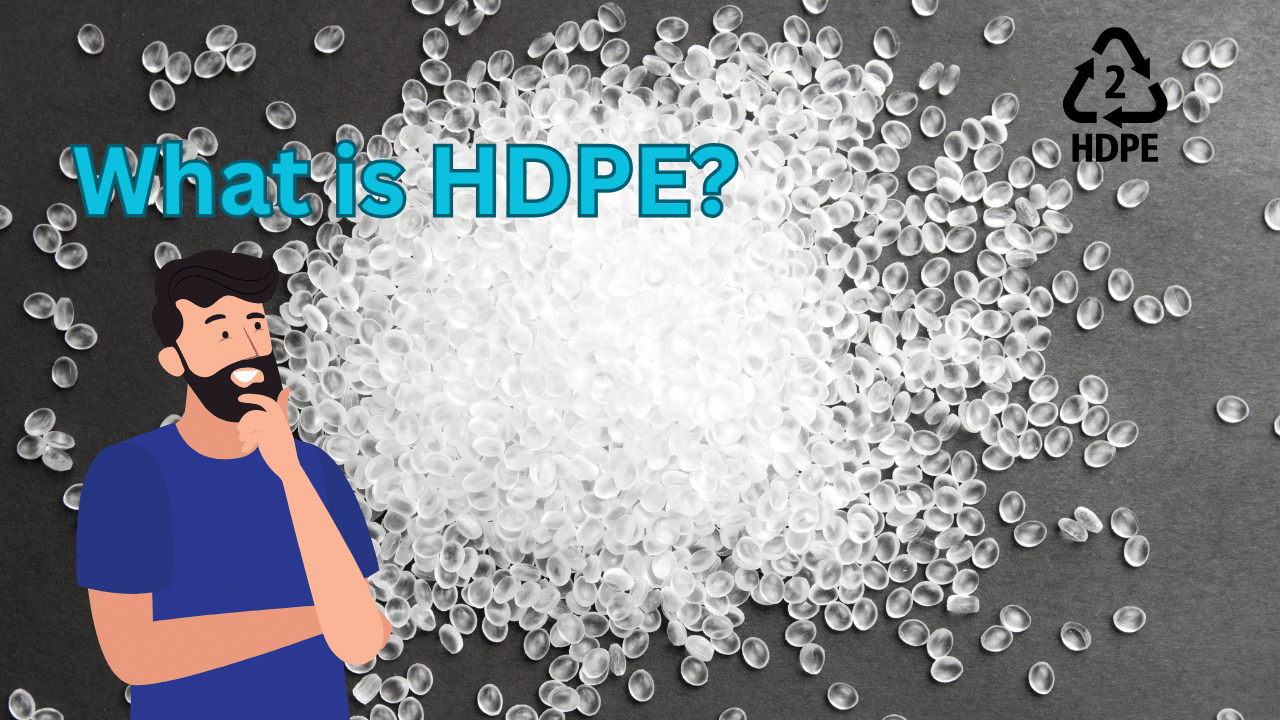What is HDPE?
High-Density Polyethylene, more commonly known as HDPE, stands as a versatile polymer of plastic renown, celebrated for its expansive utility and exceptional attributes. This substance has embedded itself deeply into our daily existence, contributing significantly to an array of sectors and industries owing to its remarkable characteristics and environmentally conscious essence. In the subsequent discourse, we shall embark on an exploration of the captivating realm of HDPE, encompassing its historical narrative, the intricacies of its production, diverse applications, environmental footprint, and much more.
Getting to Know HDPE
HDPE is a type of thermoplastic made from petroleum. It is a versatile material known for its high strength-to-density ratio, making it sturdy and lightweight at the same time. This plastic is highly popular due to its unique combination of properties, making it suitable for various applications.
The Story of HDPE

The history of HDPE dates back to the 1950s when scientists first discovered the potential of this material. It gained commercial importance in the 1960s, and since then, it has continuously evolved and expanded its applications.
How HDPE is Made
HDPE is produced through a polymerization process involving the combination of ethylene and a catalyst. The process can vary, resulting in different types of HDPE with various properties. The manufacturing process makes it highly customizable for specific applications.
The Benefits of HDPE
HDPE has a lot of advantages, like being tough, able to resist chemicals, not taking in much water, and being easy to recycle. It’s a cost-effective choice for many industries, which is why it’s so widely used.
Where You’ll Find HDPE
HDPE can be found in many places, from packaging materials to pipes, toys, car parts, and even in construction. It’s so versatile and strong that it works for a lot of different things.
HDPE’s Eco-Friendly Side
One of the best things about HDPE is that it’s good for the environment. It can be completely recycled, which helps reduce the problem of plastic waste.
Different Kinds of HDPE
HDPE comes in various types, each with its own special features. These include high molecular weight HDPE, high-density cross-linked polyethylene (PEX), and medium-density polyethylene (MDPE), each designed for specific needs.
HDPE Properties
HDPE has some impressive qualities, like high tensile strength, the ability to resist chemicals, and excellent insulation. These qualities make it perfect for use in challenging conditions. Usually, HDPE is a bit denser and melts at a temperature between 120 to 135 degrees Celsius.
HDPE vs. Other Plastics
Compared to other plastics, HDPE is more durable and strikes a good balance between being rigid and flexible. It’s labeled with a code ‘2’ by the Society of the Plastics Industry (SPI).
Recycling HDPE
Recycling HDPE is crucial for the environment. It involves collecting, cleaning, and melting the plastic so it can be used to make new things.
Advancements in HDPE Technology
Ongoing research and new ideas have led to improvements in how we use HDPE, opening up new possibilities in different industries.
Challenges in the HDPE Industry
Even though HDPE has many advantages, it faces challenges like changing oil prices and competition from other materials. Finding solutions to these problems is important for its continued success.
The Future of HDPE
The future looks bright for HDPE because people are looking for more sustainable and recyclable materials. Its growth depends on new technology and people being more aware of the environment.
In Conclusion
In summary, High-Density Polyethylene (HDPE) is an incredible plastic that’s made a big impact on many industries. Its special qualities, eco-friendliness, and versatility make it a top choice for lots of different uses.
Frequently Asked Questions (FAQs)
Q1. Is HDPE biodegradable?
A1. No, HDPE doesn’t break down naturally, but it can be completely recycled, which is good for the environment.
Q2. Where do we often see HDPE being used?
A2. You can find HDPE in many things, like packaging, pipes, bottles, and common household items.
Q3. How is HDPE better for the environment compared to PVC?
A3. HDPE is considered more eco-friendly than PVC because it can be recycled, and it’s less harmful to the environment.
Q4. What’s the difference between HDPE and LDPE?
A4. HDPE is stronger compared to LDPE, so it’s more rigid and durable.
Q5. Are there any health concerns with HDPE products?
A5. Generally, HDPE products are safe to use, and they don’t release harmful chemicals into the things stored in them.








